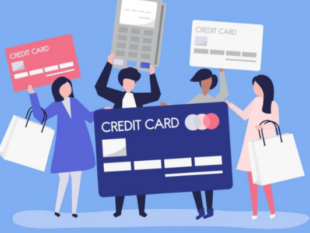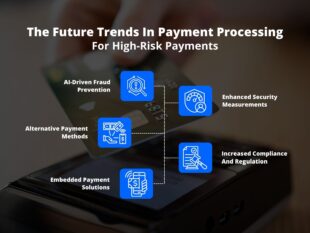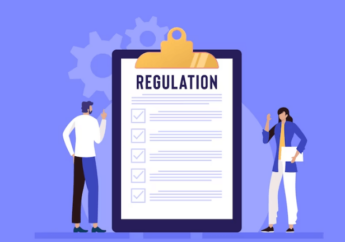Why is brand recognition better for businesses? Let’s discuss!
by Barsha Bhattacharya Business 28 May 2025
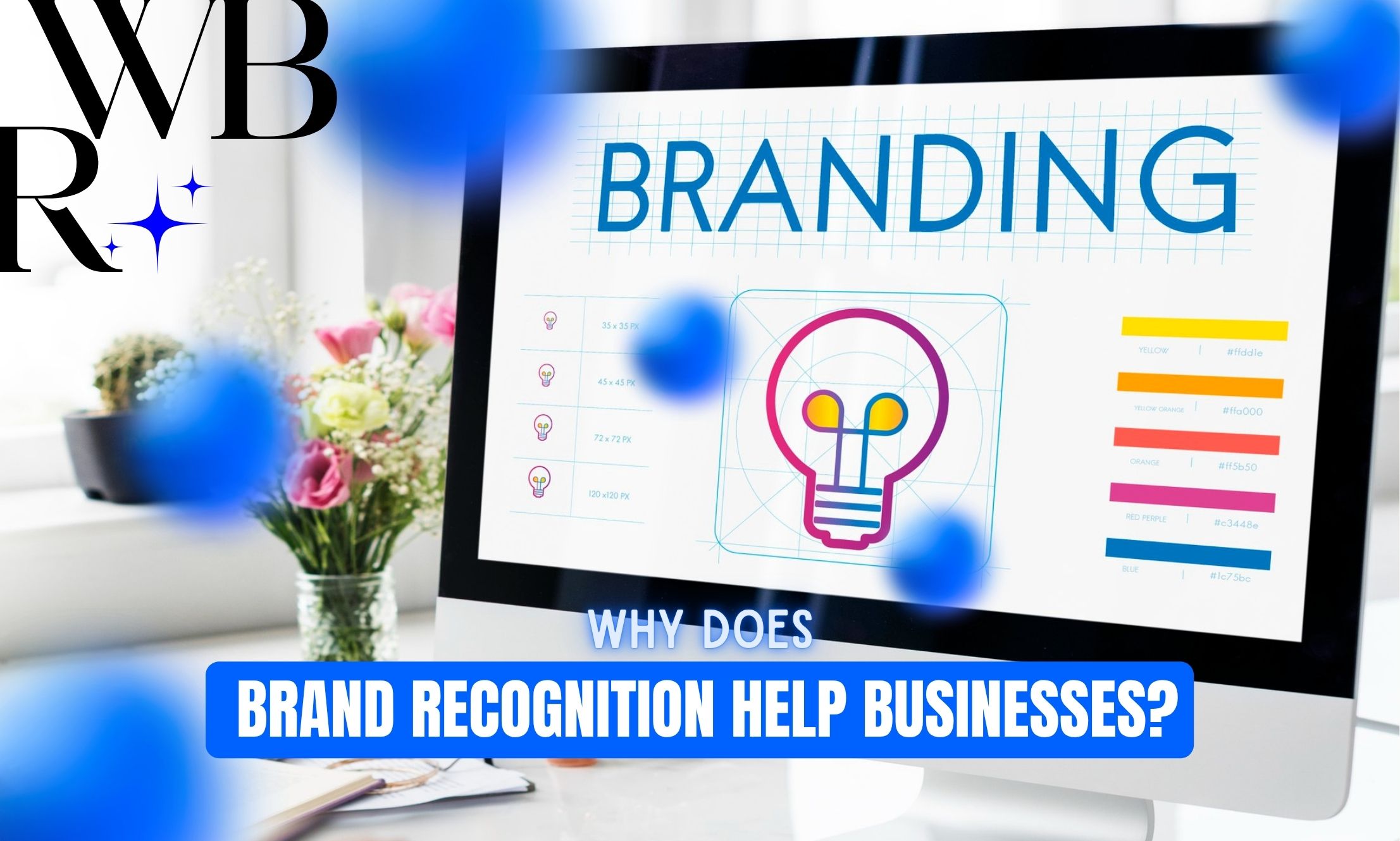
You might have heard the term “branding” used a lot. But ever wondered why it’s so great for companies to have brand recognition? Is it just a matter of having a nice logo and a fancy name? Or is there something else?
Alright, pick your drink and get cozy, because we are diving into branding, breaking it down into plain language, and how companies go from being “just another name” to “I know that brand!”
First Off, What Is Branding?
Let’s keep things simple.
Branding is the way people perceive and remember your company. Branding is a manifestation of the personality of your company.
For instance, when you hear the word Nike, you don’t just think of shoes—you think of “Just Do It,” sports, motion, energy, and quality athletic wear. That sensation you get? That’s what branding accomplishes.
Branding encompasses your:
- Name
- Logo
- Colors
- Slogan
- Tone of voice (how you “speak” to customers)
- Overall impression
It’s not only about how your business looks—it’s also about how it feels to your customers.
So, why does brand recognition help businesses?
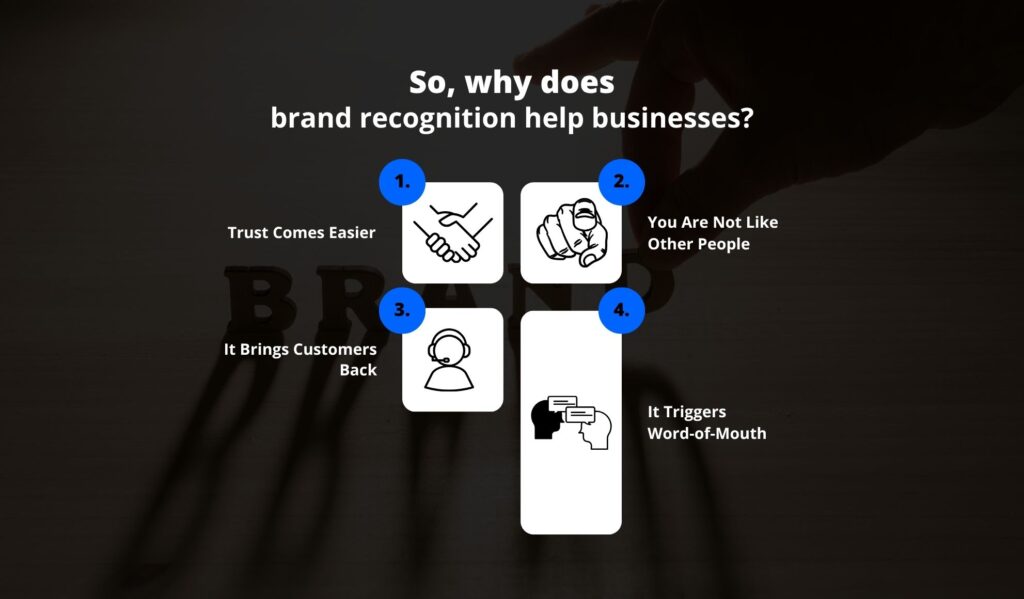
Excellent question!
When individuals view your brand, it creates a relationship. This is important because:
1. Trust Comes Easier
Suppose you are buying phone chargers on the internet. You see one by “ElectroZap” and the other by “Apple.” You know nothing about ElectroZap, but you know Apple. So, you choose “Add to Cart.”
That’s brand recognition in action. Names are what humans trust. It’s more secure and more convenient.
2. You Are Not Like Other People
Let’s get real—there are a million companies. So how do you stand out from all the rest? By creating a brand that people remember.
Regardless of whether it’s McDonald’s golden arches or Cadbury’s purple packaging, these are recognized brands. To be recognized means your customers can pick you out easily from the competition.
3. It Brings Customers Back
If individuals have had a pleasant experience with your business previously, they will come back. Why? Because they recall how you treated them. Recalling creates commitment.
4. It Triggers Word-of-Mouth
When individuals become familiar with and like your brand, they pass it on to others. Think about all the individuals who refer brands such as Starbucks or Netflix. That’s word-of-mouth business, my friend!
Brand Models – It’s Not Just a Picture
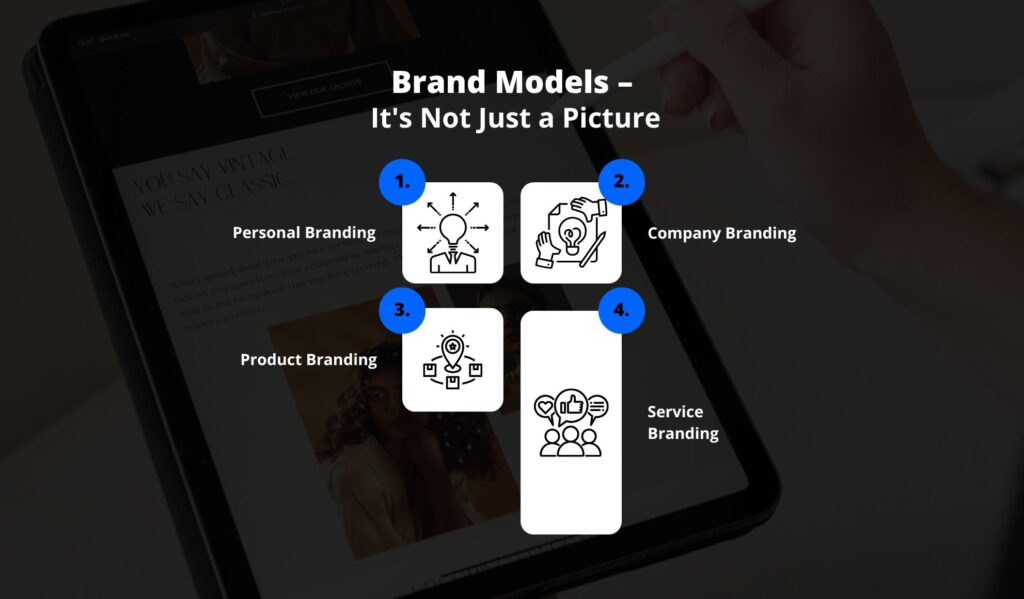
Branding is not suitable for everyone. Let’s cover the various types briefly:
1. Personal Branding
This is on personal branding. It is best suited for freelancers, coaches, solo entrepreneurs, and influencers.
Consider Oprah Winfrey. Her name is a trademark associated with wisdom, success, and integrity.
2. Company Branding
This kind explores what a business is all about. It encompasses the mission, values, and the way they speak.
Example: Apple’s corporate branding screams innovation, minimalism, and premium quality.
3. Product Branding
It is here that every product has a distinct identity.
Both Sprite and Coca-Cola are manufactured by the same company but each has its own brand, image, and message.
4. Service Branding
Working for service-delivery firms rather than product-delivery firms, such as hotels, banks, or consultancies.
Airbnb doesn’t sell products—they sell an experience. Their brand is one of comfort, community, and enjoyable travel.
Real-Life Examples: Big Companies That Began Small
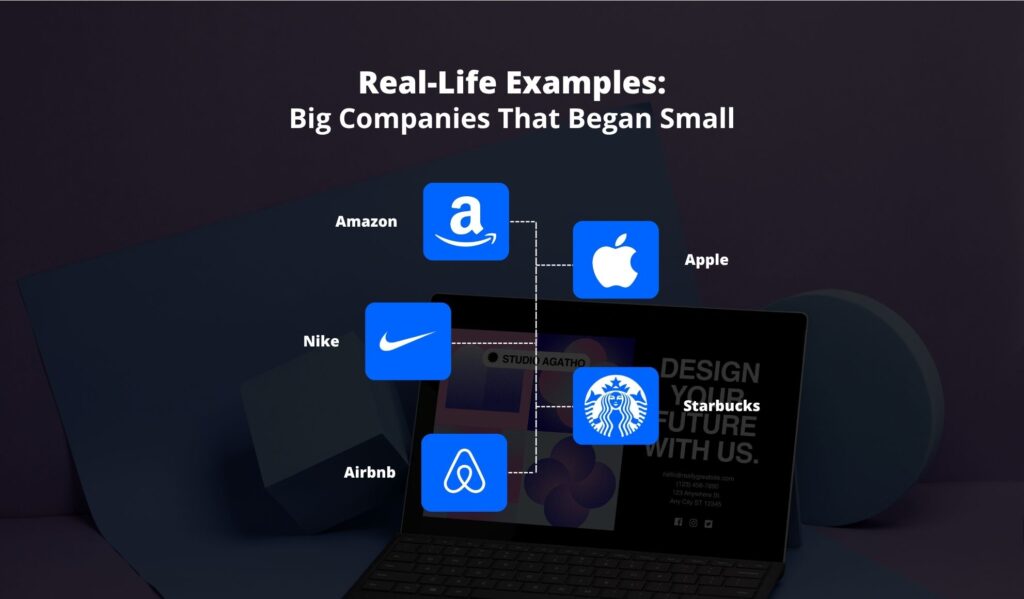
These are some fantastically successful companies that started with humble beginnings and grew to be huge because of clever branding.
1. Amazon
Started in a garage selling books. Now it is the everything store. Jeff Bezos realized early that being easy to use, having good customer service, and fast delivery would make Amazon’s brand.
People now expect a certain level of service from Amazon, and that shows how well the brand is recognized.
2. Apple
Apple began in a garage, too. Steve Jobs and Steve Wozniak created computers unlike the huge, cumbersome machines individuals were used to.
Apple’s image was founded on creativity, design, and simplicity. Individuals don’t simply purchase Apple— they join the Apple community.
3. Nike
Did you know that Nike originally was “Blue Ribbon Sports”? Initially, they sold sneakers out of a car at track meets.
Today? It is a goliath company globally. Nike’s brand is so strong that even the swoosh will have one thinking about “performance and inspiration.”
4. Starbucks
Starbucks started as a small coffee bean store in Seattle. They transformed the culture of coffee with intelligent branding.
They didn’t sell coffee—they created a “third place” between home and work. With a cozy atmosphere, your name on the cup, and that iconic green mermaid, Starbucks was a way of life.
5. Airbnb
It started with two guys using air mattresses in their living room due to a hectic conference in San Francisco.
Airbnb’s brand was founded on “belonging anywhere,” i.e., being welcoming and communal. It was not merely booking a room—it was being somewhere new.
How to Get People to Remember Your Brand for Your Business (Even When You’re Just Beginning)

Alright, let’s get realistic. You see now why it’s beneficial for businesses when people know your brand—it forms trust, loyalty, and provides you with a solid lead in a crowded market. But how do you get people to notice your brand?
Don’t worry—you don’t have to break the bank on ads to make something memorable. The below is a step-by-step guide to help you build brand recall, even if you’re new to it.
1. Be Consistent (Seriously, Consistency Matters So Much)
Take a moment to consider your favorite brands—perhaps it’s McDonald’s, Spotify, or Zara. What do they all have in common? Consistency.
They’re all identical on all of the channels—same logo, same color scheme, same tone.
Why is it important:
When individuals repeatedly look at the same pictures and messages, they recall them. Repeated exposure makes them familiar, and familiarity helps with recognition.
Action Steps:
- Choose 2–3 brand colors and utilize them throughout.
- Use the same tagline, fonts, and logo everywhere—website, emails, packages, and social media.
- Make sure your voice is right for your brand personality. If you’re having fun on Instagram, don’t get too stodgy in your emails.
2. Create a Brand Story That Triggers Emotions
People don’t connect with products; they connect with stories. Your story makes your business feel more human. It’s what makes you different from every other business selling the same things.
Why is it important:
They recall and assist you when they can grasp your “why.” Individuals are influenced by narratives.
Action Steps:
- Tell us where you’re from: Where did you start? What issues did you experience? What are you concerned about?
- Be genuine and truthful. You needn’t be perfect-sounding—honesty is more believable than perfection.
- Post your story on your website’s “About” page or on social media.
3. Speak to Your Audience as a Human Being
Think about walking into a store, asking, and the staff not listening to you. That is terrible, isn’t it? It is the same online. The more you engage with your audience, the tighter your brand relationship is.
Why is it important:
Your customers recall how they feel about you. Engaging with them makes your company feel personal, welcoming, and real, not just a company that sells things.
Action Steps:
- Handle social media comments and direct messages.
- Make quizzes, polls, and post questions to initiate discussions.
- Publicly thank your customers when they mention you or post reviews.
4. Produce Quality Content (Not Ads)
You want to make your brand memorable when they are not purchasing. That is why content matters—blog posts, videos, Instagram posts, podcasts—you can go on.
Why is it important:
When you put out valuable, interesting, or funny content, you’re remembered. You’re no longer a company—you’re a source that people trust for information.
Action Steps:
- Begin a blog that posts advice on your subject (e.g., how-to posts or top 5 lists).
- Make YouTube videos, TikTok, or Instagram reels with behind-the-scenes material or something informative.
- Utilize email newsletters to communicate news, offers, or helpful resources.
5. Add Visual Branding That Pops
Face it—looks matter, particularly when it comes to branding. Humans react to what they see, so your design has to be distinctive and memorable.
Why is it important:
A wonderful logo or attention-grabbing packaging can stick in your head. The more attractive and distinctive your brand looks, the more known it becomes.
Action Steps:
- Hire a graphic designer or use websites like Canva or Looka to design a unique logo.
- Maintain the same design appearance and color scheme on social media and your website.
- Consider your packaging—make it Instagram-friendly if possible!
6. Promote Word-of-Mouth and User-Generated Content
Want to hear a branding secret? Humans trust other humans more than they trust organizations. That is why word-of-mouth and customer content are pure gold.
Why is it important:
When others talk about your product, refer to you, or leave reviews, it makes more individuals aware of your brand and makes new consumers trust you.
Action Steps:
- Request happy clients to leave testimonials or reviews.
- Request people to mention you when they are utilizing your product and re-share their posts.
- Assign a unique hashtag and share it with your audience on your social media.
7. Collaborate with Influencers or Micro-Influencers.
Even though you’re not a large brand yet, working with the right individual can put you in the spotlight quickly. You don’t have to have A-listers—micro-influencers (1k–50k followers) work just as well.
Why is it important:
People believe in an influencer. When they endorse your brand, it’s like a friend endorsing it.
Action steps:
- Identify influencers with the same tone and values as your brand.
- Add a personal comment and sell your product in exchange for a post.
- Share their posts on your page to share with more individuals.
8. Keep Coming Back (Even When It’s Silent)
Lastly, let us mention patience. Brand awareness does not develop overnight—it takes time. You might not get extremely popular overnight, and that is okay.
Why is it important:
Being consistent over time makes people trust you. You become a regular part of your audience’s routine—something they depend on.
Action Steps:
- Post regularly (even when the engagement seems slow).
- Be faithful to your message, mission, and brand identity.
- Don’t give up if it’s not instant. Most “overnight” sensations are years in the making.
Final Thoughts!
So, why does brand recognition help businesses? Let’s wrap up with a personal conversation. Regardless of whether you are selling technology items, courses, or hand soap, your brand is your reputation.
It is what people say about you when you are not present. Brand recognition benefits companies by establishing trust, differentiating, recalling loyal customers, and generating excitement. It converts single-time buyers into lifelong enthusiasts.
The good news? You don’t have to be wealthy to launch your brand. Just be authentic, be consistent, and be passionate about your customers.
That’s how Nike, Apple, and Amazon started—and that’s how you can too.
Also read







































